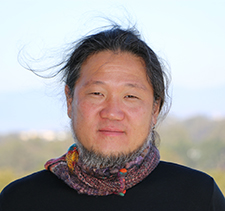Computer technology aids medical advances
When pondering the work of computer scientists, most people might imagine them writing code for a nifty new smartphone app. But a computer science team at SF State has a loftier goal: helping doctors effectively diagnose patients -- and even save lives.

Associate Professor of Computer Science Kazunori Okada
The Biomedical Image & Data Analysis Lab (BIDAL), led by Associate Professor of Computer Science Kazunori Okada, creates systems that analyze medical and biological data, with the goal of developing innovations to improve current clinical practices and scientific research.
"We use computer technology as a way to help people, to do something useful by using data analytics to help doctors see something they might otherwise miss," Okada said.
BIDAL's recent projects include a computer-aided diagnostic system that generates an image of a patient's organs that is effective for those who have had an organ removed. Existing diagnostic tools tend to get confused and try to fit the missing organ somewhere in the image. Another project, based on facial-recognition technology, uses a photograph to diagnose with 96 percent accuracy if a newborn has Down syndrome, which Okada said can be misdiagnosed by even the most skilled physicians.
Okada's newest project is a computer-based method to assess the severity of viral infections in young children, who have higher mortality rates for these illnesses. Children who are too young to follow commands, such as to sit still or take deep breaths, cannot benefit from typical screenings, nor are they able to undergo a CT scan, the most informative diagnostic. Physicians are usually forced to glean information from X-rays, which do not always allow for an accurate diagnosis.
That's where BIDAL's technology will come in. "We want to develop a program by which the computer can read the X-ray and tell you, 'Wow, this kid is really severely infected,' even when the child might seem normal based on other diagnostic measures," Okada said. With a computer cue about an infection's severity, a physician can make a decision about how aggressively to treat a child, which could make a life-or-death difference.
Many of the students in BIDAL have come to computer science later in life, Okada said, often after first studying an entirely different discipline such as linguistics or music. "Life is not always a straight path, and there are many people who find their calling later," Okada said. "I like working with them. More diversity brings more ideas."
More than any medical advancement BIDAL may achieve, Okada said his most important work is as an educator, training his students to be scientists who can think outside the box. "I work with them to improve their way of thinking, to be able to come up with new ideas," Okada said. "If we have more people who can do that, I think we will live in a better world."
-- Beth Tagawa